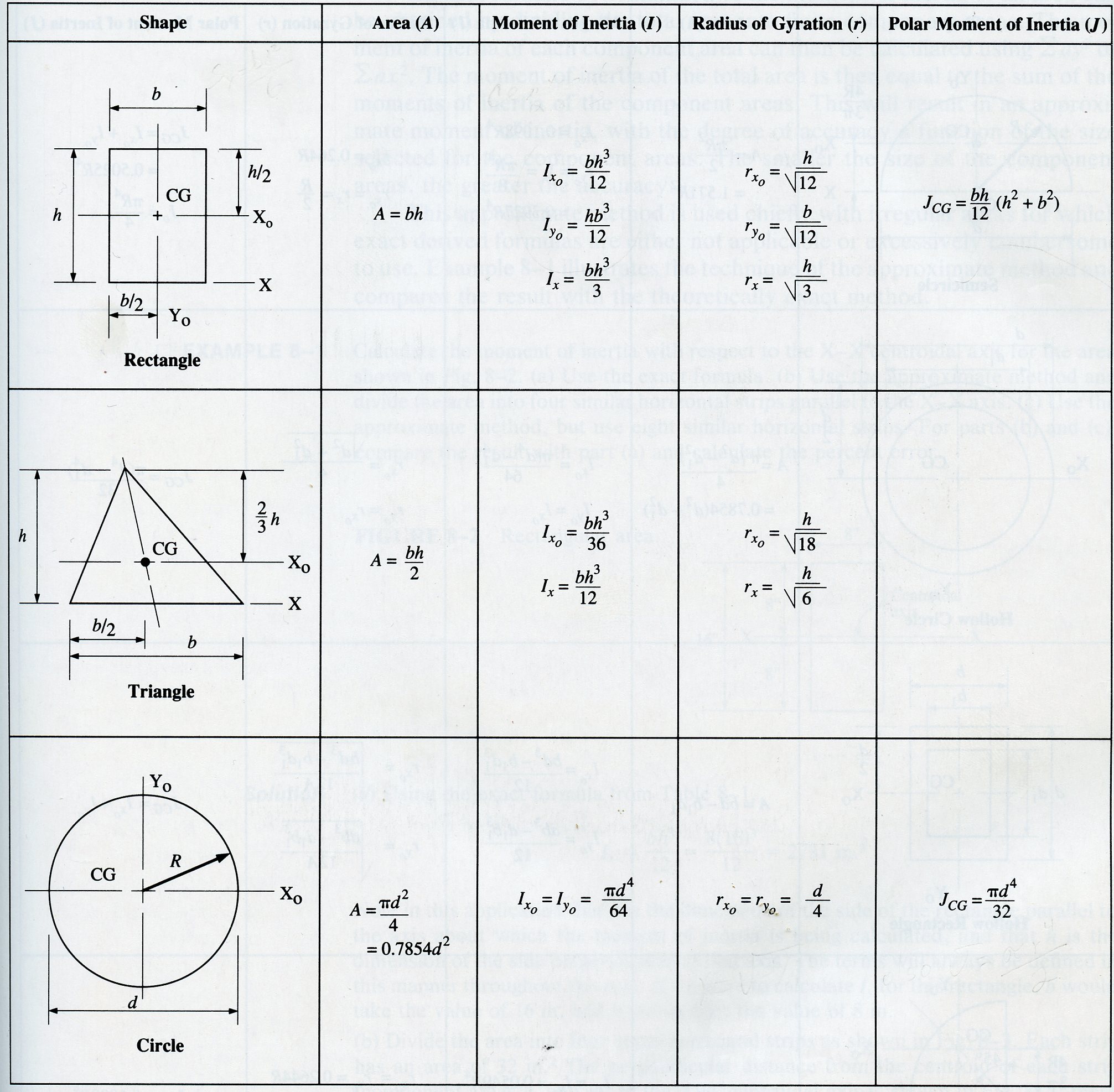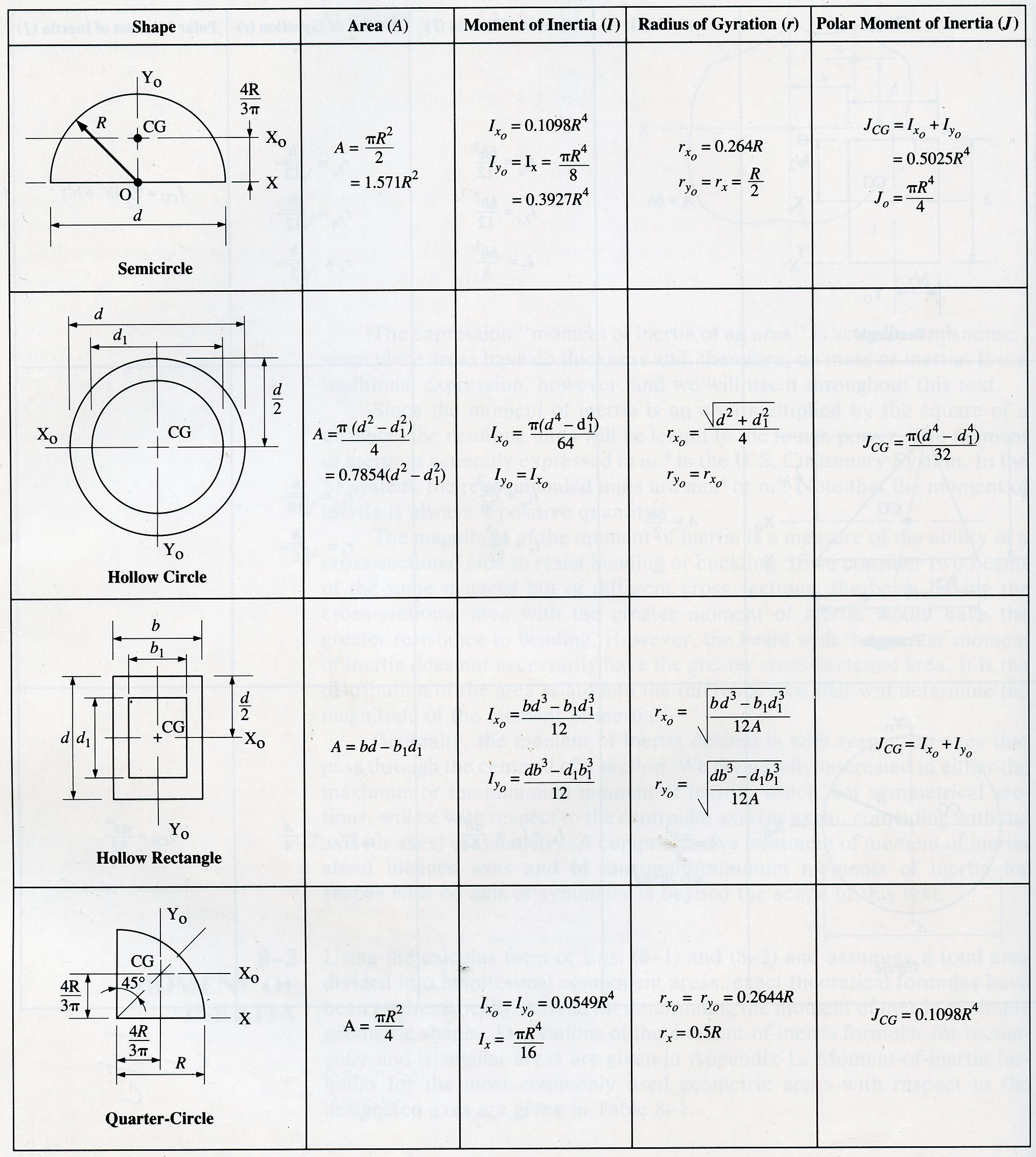|
|
|
|
|
| |
The Polar Moment of Inertia is a geometric property of a cross section. Physically, it is a measure of how difficult it is to turn a cross-section about an axis perpendicular to it (the inherent rotational stiffness of the cross-section). This means:
- The greater the Polar Moment of Inertia, the more torque is require to turn the shaft by a certain angle.
- The greater the Polar Moment of Inertia, the smaller the Shear Stress required to produce a given torque.
- For the same area, the further away the material of a cross-section is away from the axis about which it twists, the greater the Polar Moment of Inertia.


[img source: Limbrunner and Spiegel. Applied Statics and Strength of Materials. 2nd ed. Upper Saddle River, NJ: Prentice Hall, 1991.]
|
|
|
|
|




